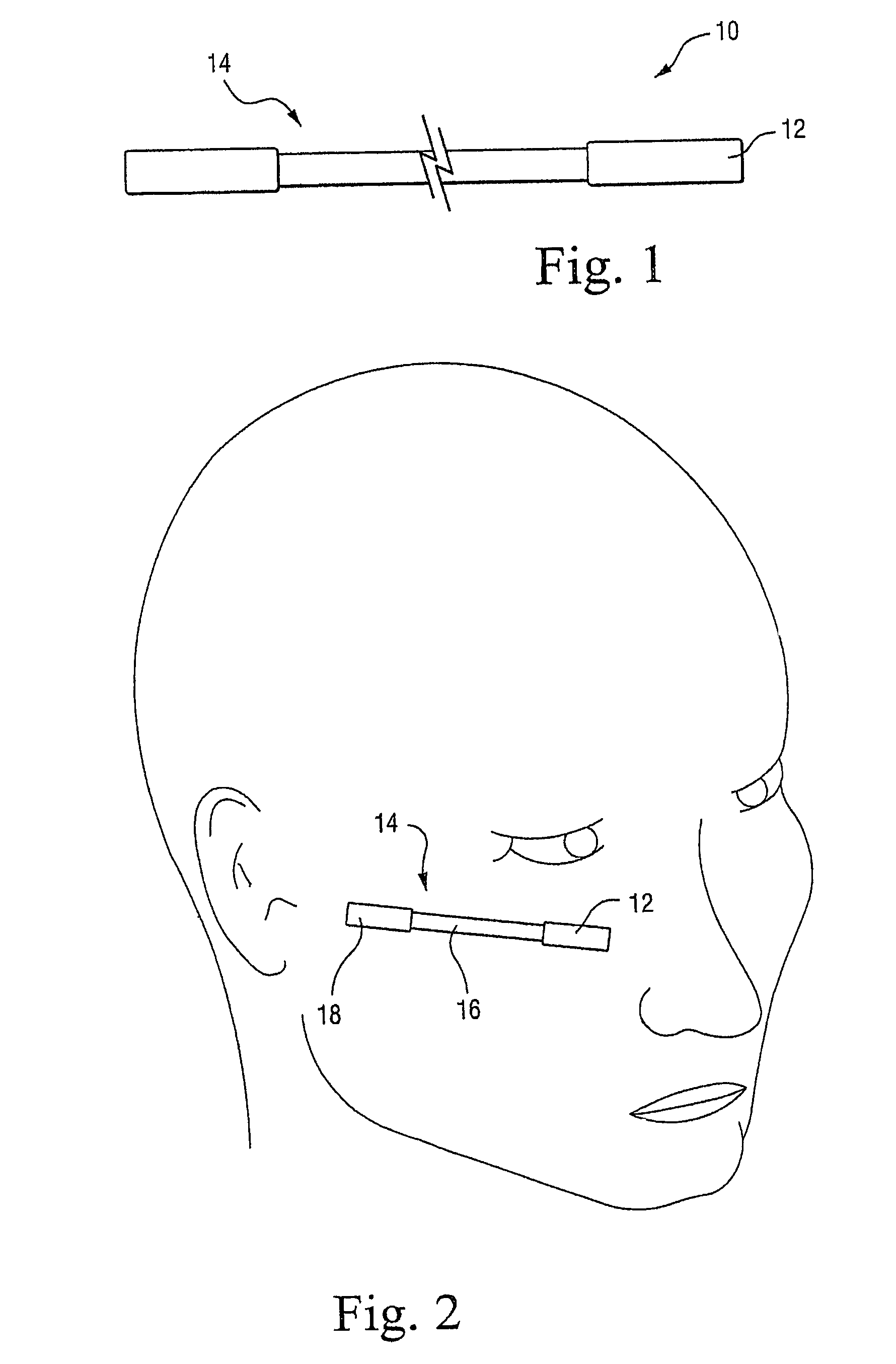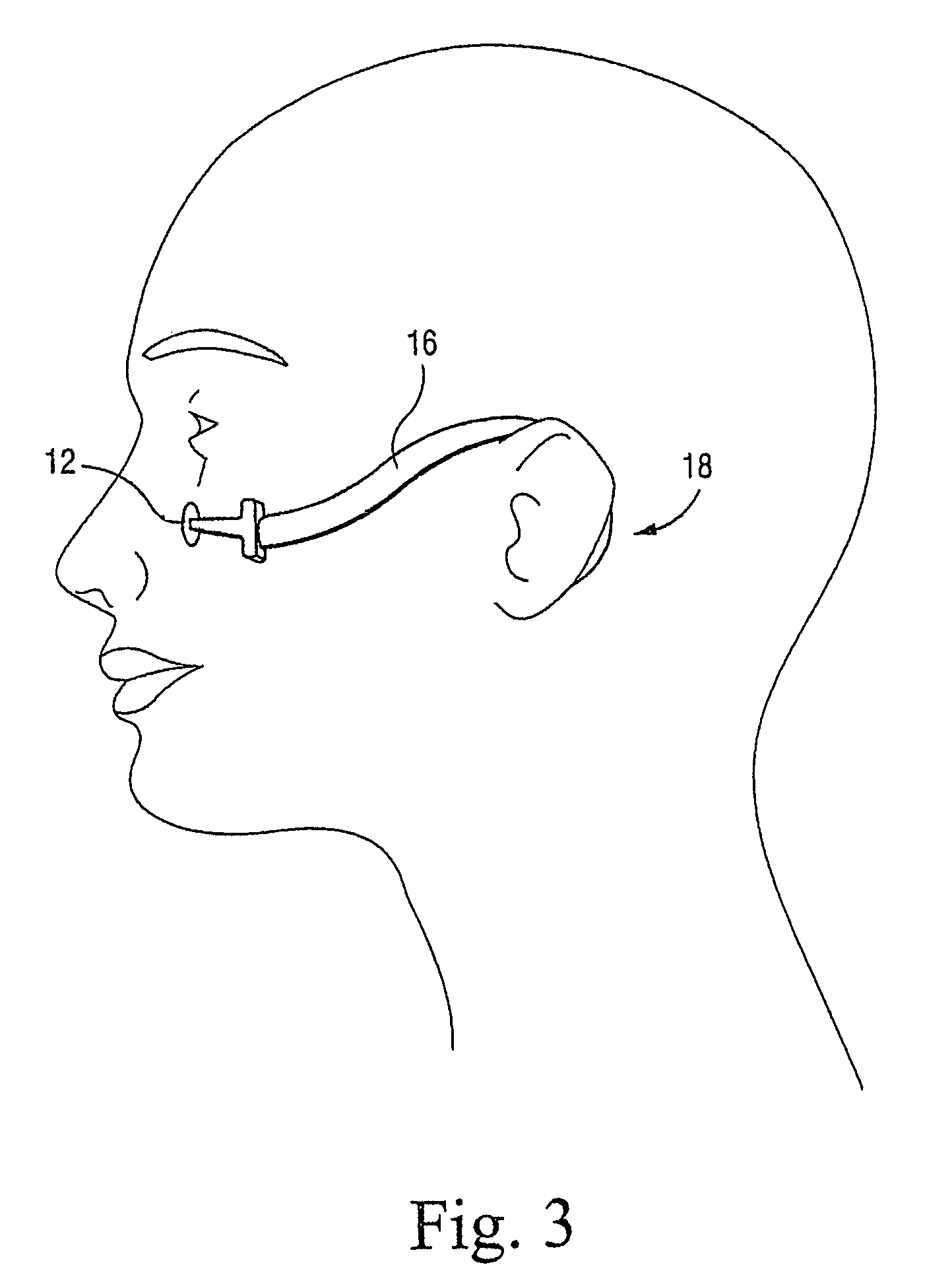Nasal dilator
a dilator and nasal tube technology, applied in respirators, person identification, diagnostic recording/measuring, etc., can solve the problems of affecting the effectiveness of cpap therapy and patient compliance, affecting the effective pressure delivered to the patient's airway, and affecting the patient's breathing. the effect of resistance, reducing the impedance, and reducing the impedan
- Summary
- Abstract
- Description
- Claims
- Application Information
AI Technical Summary
Benefits of technology
Problems solved by technology
Method used
Image
Examples
first embodiment
[0038]With reference to FIG. 1, in the invention, a nasal dilator 10 includes at least one contact pad 12 attachable to a facial region below the user's eye and outboard from the user's nose. More particularly, the “facial region” defined according to the invention is generally any area on the skin surface overlying the bone region known as Zygomatic bone (cheekbone region). The “facial region” also encompasses anywhere between the ear and nose, and also between the infraorbital margin (eye socket) and the line of the lips / mouth / chin. A tugging device 14 is coupled with the contact pad 12 and urges the contact pad 12 in a direction away from the user's nose. As shown in FIG. 2, in this embodiment, the tugging device includes a strip of flexible material 16 attached at a first end to the contact pad 12 and attached at a second end to a securing device 18, which is fixable relative to the user such that the flexible strip 16 is placed under tension. In the embodiment shown in FIG. 2, ...
second embodiment
[0046]With reference to FIGS. 6 and 7, the invention utilizes a U-shaped spring 20 over the bridge of the user's nose where its ends are biased to spring outwards away from the sides of the nose (see arrows in FIG. 4). These ends may be attached to self-adhesive foam contact pads 12 that are adhered to the region outboard of the nose as previously described. The spring 20 causes the cheek regions and thus the sides of the nose to move outwards thus dilating the nasal passages.
[0047]The pads 12 may alternatively be provided with a friction quality such as textured rubber that tends to grip to the skin (e.g., soft 10 Shore A hardness silicone rubber or tacky gel). A strap 22 (shown in dashed line in FIG. 5) or other mechanical device may force the pads 12 against he face to prevent them from sliding by increasing the friction. The resultant force of the spring 20 serves to dilate the nasal passages.
[0048]Mask Version
[0049]With reference to FIG. 8, this additional friction may also be ...
PUM
 Login to View More
Login to View More Abstract
Description
Claims
Application Information
 Login to View More
Login to View More - R&D
- Intellectual Property
- Life Sciences
- Materials
- Tech Scout
- Unparalleled Data Quality
- Higher Quality Content
- 60% Fewer Hallucinations
Browse by: Latest US Patents, China's latest patents, Technical Efficacy Thesaurus, Application Domain, Technology Topic, Popular Technical Reports.
© 2025 PatSnap. All rights reserved.Legal|Privacy policy|Modern Slavery Act Transparency Statement|Sitemap|About US| Contact US: help@patsnap.com



